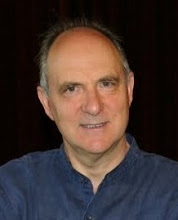Clicca qui per vedere: Video
March 1, 2011, was the tenth anniversary of the death of Archbishop Marcello ZAGO. In Italy, the celebrations of this event took place at Villorba, in the province of Treviso, his birthplace. The celebration was organized by his family, with the involvement of the parish, the diocese and the Missionary Oblates of Mary Immaculate.
On Saturday, February 26, the memorial took place in the parish. After projection of a video on the Day of Prayer for Peace held in Assisi on October 27, 1986, Fr. Fabio CIARDI, Director of Oblate Studies and Research, gave a conference on the role of Fr. Zago in the preparation and realization of that day. This year, in fact, is the 25th anniversary of an event that was a milestone in Interreligious dialogue, one that marked the path of the Church and religions around the world, “an image,” as Fr. Zago wrote, “and a portent of what religious persons should be for society: intercessors with God for peace, builders of peace among men,” icons of the unity among the children of God, of the real possibility of dialogue, of friendship and of communion among all.
On Sunday, February 27, the Eucharist was presided by Archbishop Gianfranco Agostino Gardin, of Treviso. Participating were the Superior General of the Oblates, Fr. Louis LOUGEN, together with many confreres and friends of Fr. Zago.
With the Assisi event, Fr. Marcello Zago took leave of the Pontifical Council for Interreligious Dialogue, having been recently elected Superior General of the Oblates. The results of Assisi would not end there. As he prophesied at that time, “For those who want to understand the nature and the path of interfaith dialogue in the Church and the world, the prayer meeting in Assisi on October 27, 1986, will remain a crucial step, and an even more important symbol.”
In that day, he saw above all a confirmation of ecumenical and interreligious dialogue. What the Council had stated in its documents, at Assisi was “expressed in a solemn way and understood by all, broadcast by the media. In Assisi, the welcoming of religious leaders and their presence at the prayer of different religions were in some way a recognition of religion and in particular of prayer, a recognition that religion and prayer have not only a social role, but also effectiveness with God. (Fabio Ciardi, OMI)
On Saturday, February 26, the memorial took place in the parish. After projection of a video on the Day of Prayer for Peace held in Assisi on October 27, 1986, Fr. Fabio CIARDI, Director of Oblate Studies and Research, gave a conference on the role of Fr. Zago in the preparation and realization of that day. This year, in fact, is the 25th anniversary of an event that was a milestone in Interreligious dialogue, one that marked the path of the Church and religions around the world, “an image,” as Fr. Zago wrote, “and a portent of what religious persons should be for society: intercessors with God for peace, builders of peace among men,” icons of the unity among the children of God, of the real possibility of dialogue, of friendship and of communion among all.
On Sunday, February 27, the Eucharist was presided by Archbishop Gianfranco Agostino Gardin, of Treviso. Participating were the Superior General of the Oblates, Fr. Louis LOUGEN, together with many confreres and friends of Fr. Zago.
With the Assisi event, Fr. Marcello Zago took leave of the Pontifical Council for Interreligious Dialogue, having been recently elected Superior General of the Oblates. The results of Assisi would not end there. As he prophesied at that time, “For those who want to understand the nature and the path of interfaith dialogue in the Church and the world, the prayer meeting in Assisi on October 27, 1986, will remain a crucial step, and an even more important symbol.”
In that day, he saw above all a confirmation of ecumenical and interreligious dialogue. What the Council had stated in its documents, at Assisi was “expressed in a solemn way and understood by all, broadcast by the media. In Assisi, the welcoming of religious leaders and their presence at the prayer of different religions were in some way a recognition of religion and in particular of prayer, a recognition that religion and prayer have not only a social role, but also effectiveness with God. (Fabio Ciardi, OMI)
Clicca qui per vedere: Video


Nessun commento:
Posta un commento